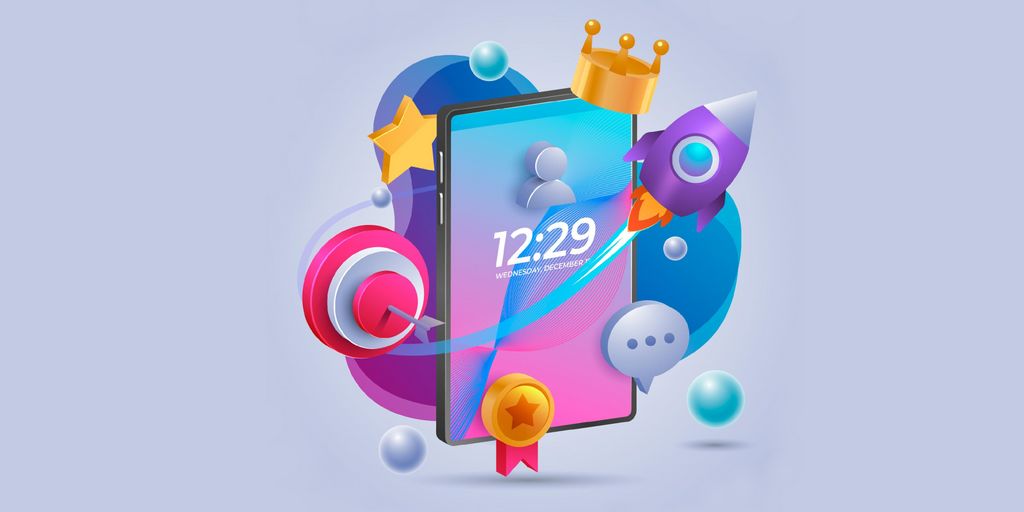Gamification in business is the use of game-like mechanics in a non-game context, such as in marketing and employee incentives. It is a relatively new concept, but has become increasingly popular in recent years as businesses have seen the potential for increased engagement and improved results. The aim of gamification is to make the tasks associated with a job or task more enjoyable and rewarding, thereby increasing motivation and productivity.
Gamification has become an increasingly popular tool for affiliate marketing. Affiliate marketing is a type of performance-based marketing in which a business rewards one or more affiliates for each customer or visitor brought about by the affiliate’s marketing efforts. Affiliate marketing can be a powerful tool for businesses, as it allows them to access a large, targeted audience at a low cost. However, it can be difficult to engage potential customers and convince them to make a purchase. Gamification can be an effective way to increase engagement and drive conversions.
Gamification in affiliate marketing can take many forms, such as competitions, rewards, leaderboards, and achievements. Competitions are a great way to encourage customers to take action. For example, a business might offer a discount or other incentive to the customer who refers the most people to their site. Rewards are another way to incentivize customers. For example, a business might offer a reward, such as a gift card, to customers who make a purchase within a certain time frame. Leaderboards are a great way to create a sense of competition and encourage customers to keep coming back. Finally, achievements can be used to recognize customers for completing certain tasks or reaching certain milestones.
By using gamification in their affiliate marketing, businesses can increase engagement and drive conversions. Gamification can help to create a sense of competition, recognize customers for their efforts, and provide incentives for customers to take action. It can also help to generate more referrals, as customers are more likely to share their experiences if they are rewarded for doing so. Finally, it can help to create a sense of community, as customers can share their experiences, successes, and tips with each other.
Gamification in affiliate marketing can be a powerful tool for businesses. However, it is important to ensure that the gamification elements are properly implemented and appropriate for the target audience. It is also important to make sure that the rewards offered are valuable and appropriate for the effort required. Additionally, it is important to ensure that the gamification elements are continuously updated and monitored to ensure that customers remain engaged. Here are 5 strategies to use gamification for affiliate marketing:
Gamification has become an increasingly popular tool for affiliate marketing. Affiliate marketing is a type of performance-based marketing in which a business rewards one or more affiliates for each customer or visitor brought about by the affiliate’s marketing efforts. Affiliate marketing can be a powerful tool for businesses, as it allows them to access a large, targeted audience at a low cost. However, it can be difficult to engage potential customers and convince them to make a purchase. Gamification can be an effective way to increase engagement and drive conversions.
Gamification in affiliate marketing can take many forms, such as competitions, rewards, leaderboards, and achievements. Competitions are a great way to encourage customers to take action. For example, a business might offer a discount or other incentive to the customer who refers the most people to their site. Rewards are another way to incentivize customers. For example, a business might offer a reward, such as a gift card, to customers who make a purchase within a certain time frame. Leaderboards are a great way to create a sense of competition and encourage customers to keep coming back. Finally, achievements can be used to recognize customers for completing certain tasks or reaching certain milestones.
By using gamification in their affiliate marketing, businesses can increase engagement and drive conversions. Gamification can help to create a sense of competition, recognize customers for their efforts, and provide incentives for customers to take action. It can also help to generate more referrals, as customers are more likely to share their experiences if they are rewarded for doing so. Finally, it can help to create a sense of community, as customers can share their experiences, successes, and tips with each other.
Gamification in affiliate marketing can be a powerful tool for businesses. However, it is important to ensure that the gamification elements are properly implemented and appropriate for the target audience. It is also important to make sure that the rewards offered are valuable and appropriate for the effort required. Additionally, it is important to ensure that the gamification elements are continuously updated and monitored to ensure that customers remain engaged. Here are 5 strategies to use gamification for affiliate marketing:
1. Create a Game-like Experience
The first step in using gamification for affiliate marketing is to create a game-like experience for customers. This can be done by offering rewards and incentives for customers who purchase products or services from the affiliate. These rewards could include points, discounts, coupons, or even exclusive access to new products or services. Customers can also be encouraged to complete challenges for further rewards, such as completing a certain number of purchases within a certain period of time.
2. Create a Leaderboard
Another way to use gamification for affiliate marketing is to create a leaderboard. This allows customers to compare their progress against each other and encourages them to strive to be the top affiliate. Customers can be rewarded for reaching certain milestones, such as the most sales or the most referrals. This can be a great way to motivate customers to increase their sales or referrals and can help to create a sense of competition.
3. Create Contests or Challenges
Social media is another platform that can be used to promote gamification in affiliate marketing. Affiliates can create contests or challenges on social media platforms, such as Twitter and Facebook, that customers can participate in. These challenges can be related to the products or services being promoted and can help to create an interactive experience for customers.
4. Relevant Rewards
It is also important to make sure that the rewards offered are relevant to the products or services being promoted. For example, if the affiliate is promoting a fitness product, then rewards could include gym memberships or discounts on fitness equipment. This will help to create a more positive customer experience and make them more likely to purchase the product or service.
5. Track Customers’ Progress
Finally, it is important to keep track of customers’ progress and reward them for reaching certain milestones. This will help to keep customers engaged and motivated to continue participating in the affiliate program.
By utilizing the techniques described above, an affiliate can effectively use gamification to increase customer engagement and sales. By creating a game-like experience, offering rewards, and tracking customer progress, affiliates can create a fun and engaging environment that encourages customers to purchase the products or services being promoted. This can be a great way to increase sales and make the affiliate program more successful.
By utilizing the techniques described above, an affiliate can effectively use gamification to increase customer engagement and sales. By creating a game-like experience, offering rewards, and tracking customer progress, affiliates can create a fun and engaging environment that encourages customers to purchase the products or services being promoted. This can be a great way to increase sales and make the affiliate program more successful.



